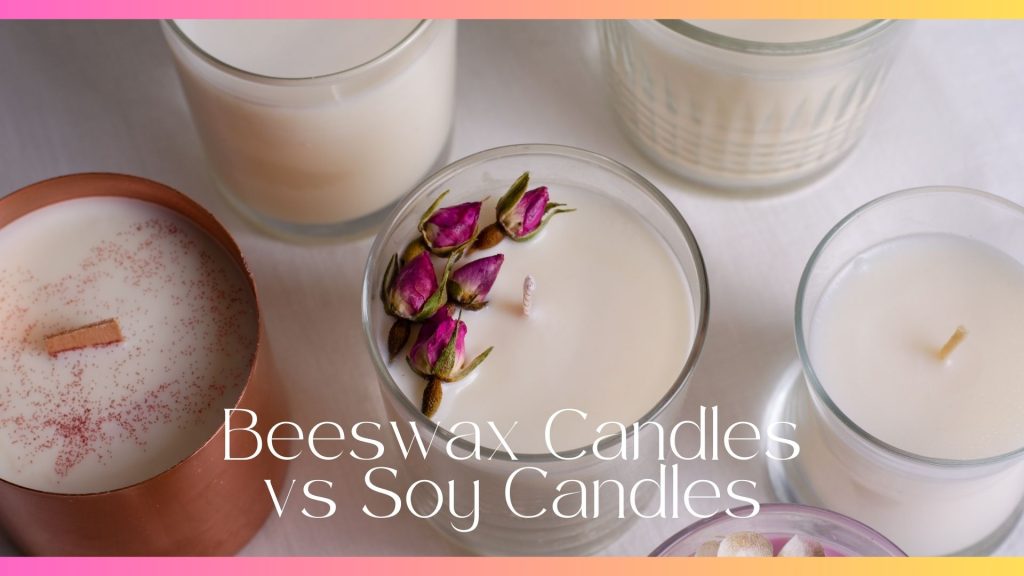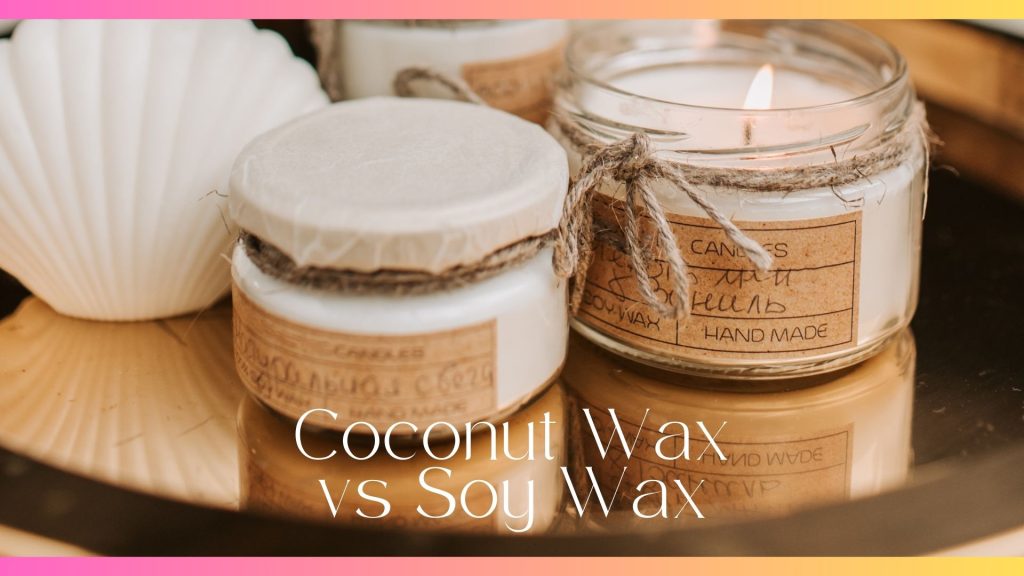Having a hard time deciding on the best wicks for beeswax candles? Choosing the right ones is essential for achieving optimal burn performance and ensuring a delightful candle experience.
In this article, we’ll explore the importance of selecting the best wicks for beeswax candles, the characteristics of beeswax, types of wicks available, and ultimately, our recommendations for the best wicks to use.
Disclaimer: This post may contain affiliate links. This means I may earn a small commission (at no cost to you) if you sign up for a program or make a purchase using my link!
Related Posts:
- How To Make Rolled Beeswax Candles: A Step-by-Step Guide
- Beeswax Candles vs Soy Candles: 6 Key Differences
- Are Beeswax Candles Better Than Others? All You Should Know
Understanding Candle Wicks
Before going into the specifics of wicks for beeswax candles, we would need to know the role of wicks in candle-making and why it should not be overlooked.
Many don’t know this but wicks are the central component of candles that is responsible for drawing up the melted wax to fuel the flame. The type of wick used can significantly impact the candle’s burn time, fragrance throw, and overall performance.
In deciding which type of wick is best for a type of candle (it varies with all), you’ll need to consider the size, material, and design of the wick. With all types of wick, it’s important to test your candles to see if the wicks are suitable.
Importance of Choosing the Right Wicks
Choosing the appropriate wicks for beeswax candles is crucial for several reasons.
The right wick ensures an even burn throughout a candle’s burn time, while minimizing smoking and soot buildup. It also helps maximize the fragrance release for scented candles.
Properly sized wicks help prevent tunneling and mushrooming, which are two things everyone would want to avoid for a great candle-burning experience. This also leads to a longer-lasting candle and make your money’s worth.
Characteristics of Beeswax
The best wick to use for a type of candle also depends on the candle’s wax. Beeswax, soy wax, coconut wax and paraffin wax are different in characteristics – with some having higher melting point than others.
Beeswax, derived from the honeycomb of honeybees, is well-sought after today thanks to their natural fragrance, clean burn, and bright flame. Its unique properties make it a popular choice among candle makers seeking a sustainable and eco-friendly alternative to paraffin wax.
Types of Wicks for Beeswax Candles
When it comes to looking for the best wicks for beeswax candles, we can consider using cotton, and wooden wicks. Each type offers distinct characteristics and burn qualities, allowing candle makers to achieve different effects and aesthetics in their candles.
Beeswax Candle Wick Size Chart
A wick size chart helps match the candle diameter with the appropriate wick size to ensure optimal burning.
Here’s a sample chart for beeswax candle wick size:
| Candle Diameter (inches) | Wick Type | Wick Size |
|---|---|---|
| 1 – 2 | Square Braid | #1/0 (1/0) |
| 2 – 3 | Square Braid | #2/0 (2/0) |
| 3 – 4 | Square Braid | #3/0 (3/0) |
| 1 – 2 | Flat Braid | 30-ply |
| 2 – 3 | Flat Braid | 45-ply |
| 3 – 4 | Flat Braid | 60-ply |
Square Braided Wicks for Beeswax Candles
Square braided wicks are designed for a steady and hot flame, making them ideal for beeswax candles.
Here are some typical sizes for square braided wicks:
| Wick Size | Candle Diameter (inches) | Characteristics |
|---|---|---|
| #1/0 (1/0) | 1 – 2 | Suitable for small pillars and votives |
| #2/0 (2/0) | 2 – 3 | Good for medium-sized pillars |
| #3/0 (3/0) | 3 – 4 | Ideal for larger pillars |
| #4/0 (4/0) | 4 – 5 | Best for extra-large pillars and containers |
Flat Braided Cotton Wicks for Beeswax Candles
Braided cotton wicks, including both flat and square braids, are popular for beeswax candles due to their clean burn and strong flame.
| Wick Size | Candle Diameter (inches) | Characteristics |
|---|---|---|
| 30-ply | 1 – 2 | Suitable for small candles |
| 45-ply | 2 – 3 | Ideal for medium-sized candles |
| 60-ply | 3 – 4 | Best for larger candles |
Beeswax Wick Guide
Even when you’ve selected the right wick, you’ll need to know these details to ensure proper placement of the wick for the best candle-burning experience.
Here are some tips and guidelines for selecting and using wicks with beeswax candles.
Tips for Choosing Wicks
These are three things to consider when choosing wicks for your candle.
- Understand Candle Size: Determine the diameter of your candle to choose the appropriate wick size.
- Wick Material: Choose between cotton or wood wicks based on your preference for burn quality and environmental impact.
- Experiment: Test different wick sizes and types to find the optimal performance for your specific beeswax candle.
Guidelines for Wick Performance
By following these charts and guidelines, you can ensure that your beeswax candles burn efficiently and cleanly.
- Proper Flame Size: A proper wick should produce a steady flame that is not too high.
- Burn Pool: Ensure the melt pool reaches the edges of the candle to avoid tunneling.
- Minimal Soot: A good wick should burn cleanly with minimal soot production.
Best Wicks for Beeswax Candles
When it comes to selecting the best wicks for beeswax candles, several factors come into play, including the diameter of the candle, desired burn time, and fragrance load.
Cotton wicks, particularly those with a square braid design, are a popular choice for beeswax candles due to their excellent performance and versatility.
When selecting a wick for beeswax candles, it’s important to test different sizes and types to find the optimal match for your specific candle dimensions and desired burn characteristics.
Here is a list of some of the best wicks for beeswax candles, considering their ability to handle the higher melting point and thicker viscosity of beeswax.
Cotton Square Braid Wicks
Known for their ability to produce a hotter and steadier flame, these wicks are often considered the best choice for beeswax candles. They are designed to support the slow and even burning of beeswax.
Cotton Flat Braid Wicks
Another excellent option, these wicks are similar to square braid wicks but are flatter. They also provide a steady flame suitable for beeswax.
Wood Wicks
These can be used with beeswax candles, offering a unique crackling sound and aesthetic. Thicker wood wicks or those specifically designed for use with beeswax are preferable to ensure efficient burning.
Eco Wicks
Typically made from cotton and sometimes treated with a vegetable-based coating, eco wicks can be suitable for beeswax candles if they are designed to handle the higher melting point. They are a good choice for those looking for environmentally friendly options.
Pre-Waxed Cotton Wicks
These wicks are pre-coated with beeswax or soy wax, making them stiffer and easier to handle. They are a practical choice for beeswax candles and often provide a consistent burn.
How To Choose Wicks for Beeswax Candles
Choosing the best wicks for beeswax candles involves several steps to ensure a clean, efficient, and aesthetically pleasing burn. By following these steps, you can systematically determine the best wick for your beeswax candles, ensuring they burn efficiently and beautifully.
Here’s a step-by-step guide on how to decide which type of wick to go for.
Step 1: Understand the Characteristics of Beeswax
Beeswax has a higher melting point and is denser than other types of wax. Knowing these characteristics will help you choose a wick that can handle these properties.
Step 2: Determine Candle Dimensions
Identify the size and shape of your beeswax candle, including its diameter and height. These dimensions will influence the type and size of wick you need.
Step 3: Select Wick Type
Choose from the following wick types, which are known to work well with beeswax:
- Cotton Square Braid Wick: Best for a hotter, steadier flame.
- Cotton Flat Braid Wick: Suitable for a consistent burn.
- Wood Wick: Offers a unique aesthetic and sound.
- Eco Wick: Made from natural materials, suitable if designed for higher melting points.
Step 4: Match Wick Size to Candle Diameter
Refer to wick size charts provided by wick manufacturers. These charts help match the wick size to the candle diameter. For example, larger diameter candles will require thicker wicks to ensure an even burn.
You can also refer to the chart I’ve provided above but it’s always best to stick to what the manufacturer recommends.
Step 5: Conduct a Burn Test
Once you’ve selected a wick type and size, make a test candle. Burn the candle to observe the flame size, burn pool, and overall performance.
Look for the following indicators when burning candles to see if it’s the right fit:
- Proper Flame Size: The flame should be steady and not too high or flickering excessively.
- Even Burn Pool: The melt pool should reach the edges of the candle without tunneling.
- Minimal Soot: A good wick should produce little to no soot.
Step 6: Adjust as Necessary
Based on the burn test results, you may need to adjust the wick size or type. If the flame is too small, try a thicker wick. If it’s too large or produces soot, try a thinner wick.
Step 7: Repeat Testing
Continue testing with different wick sizes and types until you achieve the desired burn characteristics. Each adjustment brings you closer to finding the perfect wick for your beeswax candle.
Step 8: Document Your Findings
Keep a record of the wick types and sizes that work best with your beeswax candles. Note the dimensions and performance outcomes for future reference.
If you’re a serious candle-maker, it’s best to create a standard form template for you to record your burning experiments. This makes it even more organized for you.
Bottom Line
Choosing the best wicks for your beeswax candles is equally important as choosing the type of wax and container used. The right wick will make it easier for you and your team to create high-quality candles with optimal burn performance and fragrance throw.
Remember, practice makes perfect and perfection takes time!
Frequently Asked Questions (FAQs)
Yes, beeswax candles typically require a special wick. Beeswax has a higher melting point than other waxes, so it needs a wick that can handle the thicker viscosity and higher temperature.
The best wick to use with beeswax candles is usually a cotton square braid or flat braid wick. These types of wicks are designed to provide a hotter, steadier flame, which is necessary to burn beeswax effectively. When choosing a wick for beeswax candles, it’s crucial to consider the candle’s size, shape, and the specific burning characteristics of beeswax to ensure a clean and efficient burn.
Yes, you can use wood wicks with beeswax candles, but it might require some experimentation. Wood wicks can provide a unique aesthetic and sound, but they need to be appropriately sized to ensure they burn beeswax efficiently. It’s often recommended to use thicker wood wicks or those specifically designed for use with beeswax.
Eco wicks, which are typically made from natural materials like cotton and sometimes treated with a vegetable-based coating, can be suitable for beeswax candles. However, it is essential to choose eco wicks that are designed to handle the higher melting point of beeswax. Testing different sizes may be necessary to find the optimal wick for your specific candle.



